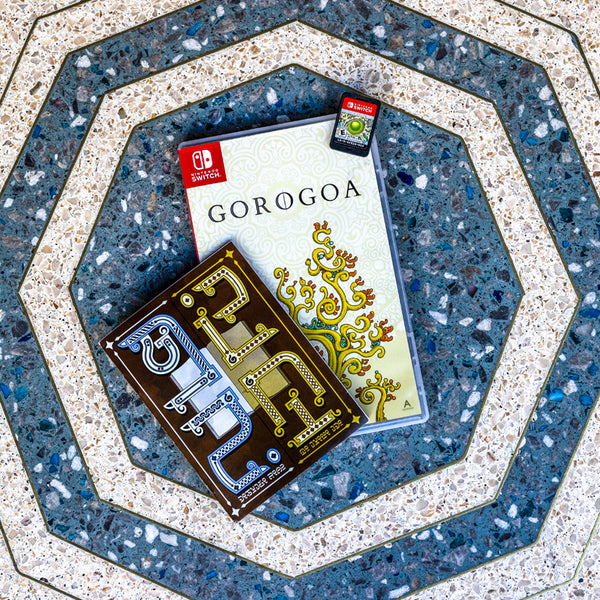

The world has its own internal logic, and even when you’re pulling objects from the dreams and thoughts of one panel into the reality of another, it all seems to make sense. When you find the solution, it’s satisfying to watch everything click into place. You can take your time clicking around the screen, walking around the environment and testing different interactions. If you get stuck, the confined space of its four-tiled world make it so that you’ll eventually progress, even if it’s by process of elimination. Gorogoa’s puzzles aren’t frustrating and they won’t make you bang your head against the wall. Even the shifting perspectives echo the way the character is trying to find a way to look at the mystery of the creature from his childhood, searching for answers from within and without. The gears, for instance, summon up the specter of ritual and the perpetuity of seeking the truth. They all fit into Gorogoa’s overall story. Many of the puzzles play with perspective - zooming in and out to line up two panels so that one item can slide into the other - while others require you to activate mechanisms such as gears. Clicking and dragging splits it into two, one with the character standing outside, and the other with the now empty room. For instance, one panel may depict a character inside a house, looking out of the window. To progress through the story, you manipulate scenes that sometimes remain within their panel and other times span more than one.

They feel like comic book panels, and everything takes place in a two-by-two grid.

The puzzles are clever, and they make you feel clever when you figure them out. Though we’re only offered a sliver of it in the game, the amount of detail in the game’s drawings gives your imagination plenty to mull over. Even though you might think of expansive sandbox games or massively multiplayer online RPGs when the word “world-building” pops up, it’s unmistakable that Roberts has built a world here for his character to explore. The most impressive thing about Gorogoa is that feeling of stepping through the looking glass. As the silent protagonist travels to and from various locations, the cityscape around him bears resemblance to real-life architecture but is slightly skewed and filled with little foreign details that allude to entire cities where imaginary people might be living their lives. Without ever saying a word, it references an entire culture and society, its invented symbols suggesting whole religions and myths. Much like its story, Gorogoa’s handcrafted art is evocative and surreal, transporting the player to a world just a little sideways of reality.


 0 kommentar(er)
0 kommentar(er)
